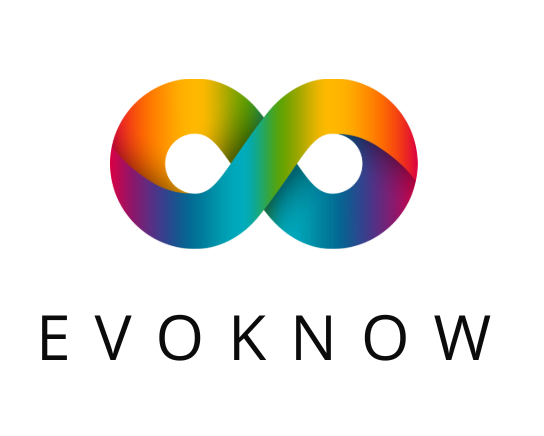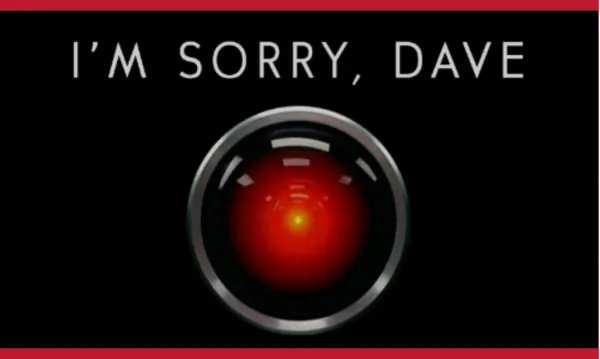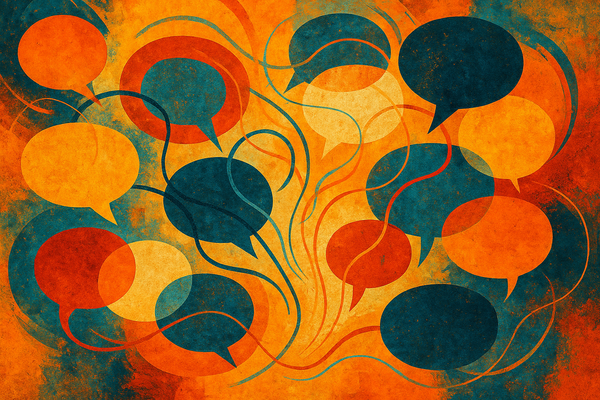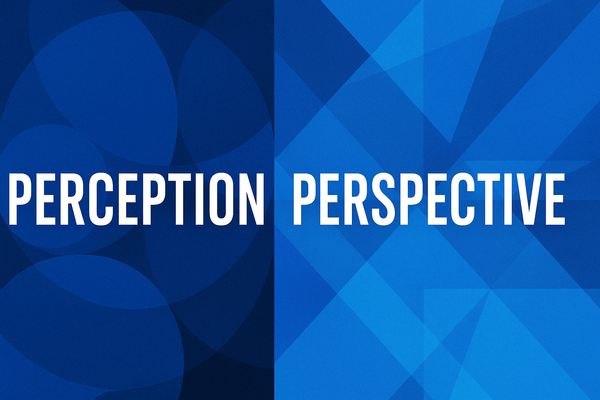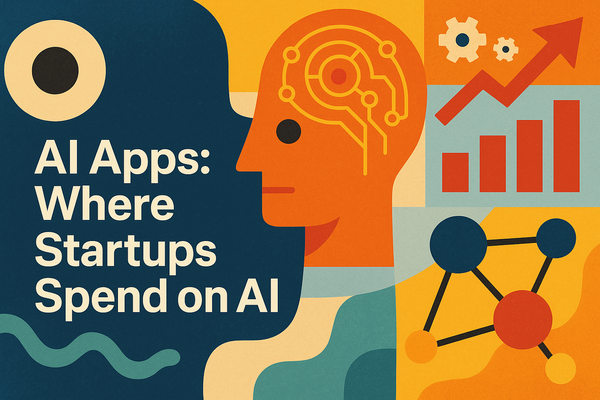AI: The New Superpower for Professionals and Entrepreneurs
Is AI a super power for you or it has become a poison pill that will slowly eat away your job?
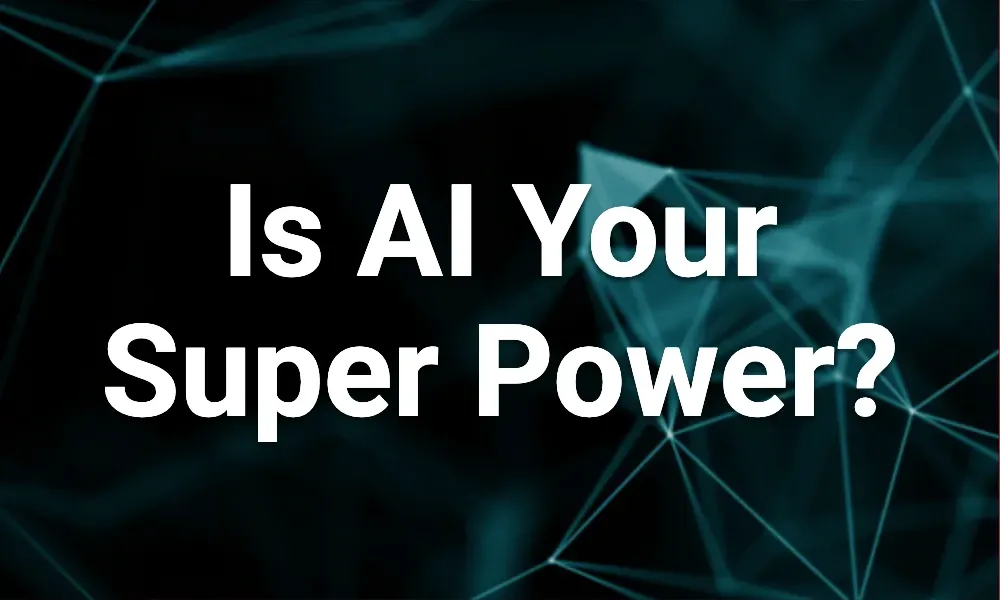
Artificial Intelligence isn’t just tech industry jargon anymore – it’s rapidly becoming a superpower in the toolkit of everyday professionals. From classrooms to clinics, and from engineering labs to startup garages, AI is helping people solve real-world problems in ways that were science fiction just a few years ago. In 2024, we saw a surge in AI adoption across industries as these tools grew more accessible and affordable. The appeal is simple: AI can analyze mountains of data, automate tedious tasks, and even spark creative ideas at lightning speed. The result? Teachers finding more time to mentor students, doctors spending more time with patients, engineers designing optimal solutions faster, and entrepreneurs scaling up businesses single-handedly. It’s not about replacing the human touch – it’s about augmenting our abilities. In the words of one industry leader, combining AI tools with human knowledge “unlocks a real superpower” for businesses. Let’s explore how this phenomenon is unfolding in various professions, with practical examples and tools (beyond just chatbots) that are empowering people in their daily work.
AI in the Classroom: Empowering Educators
Teachers around the world are discovering that AI can be the ultimate teaching assistant. Imagine a scenario: a high school teacher wants to personalize learning for 30 diverse students. Traditionally, that’s an almost impossible task. But with AI, the teacher can use software that analyzes each student’s performance and instantly adjusts lesson plans for their level and learning pace. AI-driven analytics can spot who is struggling with fractions and who’s ready for algebra, enabling truly tailored learning experiences. Likewise, the mundane chores of teaching – grading quizzes, drafting lesson materials, even writing progress reports – can be automated or sped up by AI, freeing teachers to spend more one-on-one time with students.
Take Quizizz, for example. This popular platform now has an AI that helps teachers create quizzes which adapt in real-time to each student’s answers. It can automatically adjust question difficulty and even rephrase questions to relate to real-world scenarios, giving each learner a custom path through the material. Another tool making waves is Slidesgo’s AI Presentation Maker, which lets a teacher generate a full slide deck in minutes. By simply entering a topic and tone (“casual”, “professional”, etc.), the AI produces a ready-to-use presentation – complete with suggested images and text – saving hours of prep work. There are also AI writing assistants like AudioPen, which transcribe and polish a teacher’s spoken notes into well-written text, and Canva’s Magic Write, which can brainstorm creative visuals or handouts at a moment’s notice.
All of this adds up to a superpowered teacher: one who can plan individualized lessons, grade and give feedback faster, and produce engaging learning content with less burnout. As one educator noted, the right AI tools can “automate or streamline these tasks, which allows teachers to have additional time with their students”. Perhaps most importantly, teachers are also turning AI into a lesson itself – discussing with students how to use these emerging tools responsibly and creatively. In the AI-enabled classroom, the human educator remains the hero, now equipped with some powerful new sidekicks.
AI in the Clinic
Helping Doctors Focus on Patients
Modern healthcare is experiencing an AI-assisted makeover, and doctors are feeling the benefits at both the bedside and the research bench. One of the biggest boosts is in reducing paperwork and administrative drudgery, which has traditionally eaten up hours of a physician’s day. Now, imagine walking into a clinic where an AI medical scribe listens to the doctor-patient conversation and automatically generates detailed visit notes, complete with key insights highlighted. This isn’t futuristic fantasy – such tools already exist. They document the encounter in the electronic health record and even draft the follow-up summary or referral letters the doctor would usually have to write later. The effect is profound: physicians reclaim time to talk to patients, rather than type into computers, and the “manual and cognitive burden” on clinicians drops significantly. In an era when burnout is a serious concern, these AI assistants provide relief while improving accuracy.
AI is also proving to be a tireless diagnostic aide. Consider medical imaging – X-rays, MRIs, CT scans – which doctors often must read quickly and accurately. AI-powered image recognition systems can scan these images in seconds, flagging even subtle anomalies that a human might miss on a rushed day. In gastroenterology, for instance, AI is used during colonoscopies to automatically detect polyps on the live video feed, ensuring nothing is overlooked. Similarly, algorithms can pre-screen chest X-rays or CT scans: normal images get cleared with high confidence, while anything unusual is flagged for closer review by a radiologist. This means patients get results faster, and specialists can focus their expertise where it’s needed most, instead of wading through piles of normal scans.
Doctors are also tapping AI for its brainpower in knowledge-intensive tasks. No single human can instantly recall the entire corpus of medical literature, but an AI can be trained on millions of journal articles. Today, a doctor puzzling over a tricky case can consult an AI assistant (some are akin to medical chatbots) and get immediate insights or a list of possible diagnoses to consider. For example, if a physician encounters a rare set of symptoms, an AI can cross-reference against global case databases in seconds, suggesting what rare disease might fit and what treatments have worked elsewhere. Think of it as having a colleague with encyclopedic knowledge on call 24/7. Of course, the doctor still uses their judgment – but now they’re armed with far more information. Hospitals are even using predictive AI models to improve care: from spotting early signs of sepsis in patient data (and alerting staff to intervene) to identifying which post-surgery patients might develop complications like opioid dependency so that they can be monitored and helped proactively.
Crucially, these medical AI tools are not about replacing doctors – they’re about amplifying what doctors do best. With AI handling the grunt work of record-keeping, initial scanning of data, and information retrieval, physicians can devote more attention to the human side of medicine: talking to patients, forming diagnoses, and planning treatments. As one Harvard clinician put it, AI is helping “free up a clinician’s time to focus more on their patients, ‘humanizing’ care in new ways.” In essence, AI is becoming the unseen resident in the exam room – one that tirelessly crunches numbers and checks details in the background, so the doctor can be fully present in the foreground.
AI in Engineering
Turbocharging Design and Coding
Engineers of all stripes – from software developers to mechanical designers – are wielding AI as a powerful new tool in their problem-solving arsenal. In many ways, AI functions like an infinitely patient, uber-intelligent engineering intern: it can generate design ideas, test solutions, and handle repetitive work at scale, allowing engineers to focus on the high-level creative and critical tasks.
Consider the realm of product design and manufacturing. Traditional engineering often involves a painstaking cycle of proposing a design, simulating or prototyping it, finding flaws, then iterating over and over. Now, with generative design AI, an engineer can input their requirements (say, “a drone arm that must support X weight, attach to Y, and use minimal material”) and let the AI produce hundreds or thousands of design alternatives – including many a human might never have thought of. Aerospace companies are already exploiting this. Boeing, for example, used generative AI algorithms to optimize airplane parts and reported a significant reduction in the time it takes to design and test new components, all while maintaining safety standards. In practice, what might have taken months of drafting and testing can be shortened to weeks. The AI churns out options, perhaps an oddly organic-looking bracket or a wing rib with a web-like internal structure, and engineers then pick the best and refine it. Often these AI-suggested designs aren’t just faster to arrive at – they’re superior, achieving weight reductions or strength improvements that translate into real-world benefits (like lighter aircraft improving fuel efficiency). Car manufacturers are on it too: General Motors famously used AI-driven generative design to reinvent a seat-belt bracket, consolidating what was once an eight-part assembly into a single 3D-printed part that was 40% lighter yet 20% stronger than the original. This is engineering alchemy – less material, more strength – achieved by trusting AI-driven algorithms to find designs humans didn’t imagine.
Meanwhile, software engineers have welcomed AI as a coding companion. Anyone who’s written code knows the frustration of boilerplate tasks and syntax gotchas. AI-based code assistants (like GitHub’s Copilot, Amazon’s CodeWhisperer, and others) are tackling exactly that. These tools live in your coding environment and can auto-complete lines or whole blocks of code as you work – almost like finishing your sentences for you. The impact on productivity is tangible. In a recent study, over 90% of developers reported that AI coding assistants helped them complete tasks faster, especially the repetitive chunks that otherwise chew up time. But speed is only part of the story. Developers also find that such tools make the work more enjoyable – 73% said AI helpers keep them “in the flow” by taking care of tedious bits, and a large majority felt less frustrated and more fulfilled with their job when using AI assistance. One engineer quipped that with an AI pair-programmer handling the rote stuff, “I have to think less, and when I have to think it’s the fun stuff”. Essentially, AI is turning programmers into super-coders, automating the drudge work (like writing routine functions or catching errors) so they can focus on creative problem-solving and architecture.
Beyond coding, AI helps engineers sift knowledge faster. Need to troubleshoot why a circuit is overheating? An AI could quickly scan forums, textbooks, and spec sheets to suggest likely causes. Need to summarize a 100-page engineering standard or data sheet? An AI text summarizer can do that in seconds, pinpointing the parts you actually need. There are also AI-driven simulation tools: for instance, in civil engineering, AI can run predictive models to see how a bridge might respond to thousands of different earthquake scenarios, far more combinations than traditional simulation would allow in a reasonable time. And in electronics, AI can optimize chip layouts or antenna designs by trialing variations at superhuman speed.
The net effect is that engineers, empowered by AI, can iterate faster, make data-driven decisions with greater confidence, and push the boundaries of innovation. Importantly, the engineer remains in control – much like Tony Stark in the Iron Man suit – but the AI “suit” gives them capabilities they wouldn’t have alone. As these tools become mainstream, we may look back and wonder how engineers ever got along without an AI at their side.
AI in Business
The Entrepreneur’s Secret Weapon
Entrepreneurs and small business owners often have to wear every hat – product developer, marketer, customer service rep, data analyst – all at once. AI is quickly becoming the go-to sidekick for these one-person armies and lean teams, essentially giving them capabilities of a much larger operation. In the world of startups and small business, AI is leveling the playing field, letting the little guys compete with big corporations when it comes to intelligence and efficiency.
One dramatic example grabbed headlines last year: an entrepreneur challenged ChatGPT to act as his business mentor with only $100 of startup capital. In just a few days, following the AI’s step-by-step instructions, he launched an eco-friendly products website, complete with marketing plans and product ideas. He even used AI image generators like DALL·E to create a logo and graphics, and ChatGPT to write content – all without hiring a single employee. The experiment, dubbed “HustleGPT,” led to the site raising over $1,000 in a day and being valued (at least on paper) at $25,000 within a week. While this was an extreme and playful case, it showcased the very real potential of AI as a business co-founder. The AI provided ideas, prioritized tasks, and took on creative duties, while the human executed the plan.
Even if you’re not handing the reins to a chatbot entirely, entrepreneurs are using AI in more focused, practical ways across their business. Consider lead generation and sales, the lifeblood of a growing company. Modern customer relationship management (CRM) systems like HubSpot now come with AI-powered features out of the box. For instance, HubSpot’s AI can automatically score incoming leads – analyzing data about each prospect to predict who is most likely to convert into a customer. Instead of blindly cold-calling 1,000 people, a founder can focus on the 100 hot leads the AI recommends, dramatically increasing efficiency. The same system can even predict customer behavior and suggest how to nurture each lead, essentially providing a mini playbook for turning prospects into paying clients. In parallel, specialized AI tools like SmartWriter.ai help with the outreach itself: it uses machine learning to craft personalized email campaigns, analyzing customer preferences to tailor the content. So that initial sales email you send out can be uniquely appealing to each recipient – perhaps highlighting features relevant to their industry or even adjusting tone based on their profile – all done automatically. Small teams can thereby run sophisticated, data-driven marketing campaigns that feel handcrafted.
On the marketing and creative front, AI is a godsend for entrepreneurs who can’t afford big design or content teams. Need a promotional video or a snazzy graphic for social media? Tools like Canva have introduced AI features that generate visuals (even short videos) from a simple text prompt. For example, you can type “Create a 15-second Facebook ad video for my new coffee mug that highlights it keeps drinks hot for 8 hours” and get a decent starting video, complete with stock footage and music. It might not win an Oscar, but in minutes you have a serviceable ad that would have cost days of work or hundreds of dollars. Likewise, AI copywriting tools (e.g. Jasper, Copy.ai) are helping entrepreneurs draft everything from product descriptions to blog posts. They can mimic a given style, sprinkle in SEO keywords intelligently, and pump out engaging text content at scale. The founder of a boutique online store can now rely on AI to generate a month’s worth of social media captions or a batch of clever product taglines, which she can then tweak and personalize.
Finding product-market fit – that elusive goal of fine-tuning your product to what customers really want – is another area where AI is proving invaluable. Businesses drown in feedback: customer reviews, support tickets, social media comments, survey responses. AI-powered analytics can sift through thousands of these feedback points in moments, identifying trends and common pain points that no single human could digest so quickly. For instance, Zendesk (a customer support platform) uses AI to analyze support tickets and chats to pinpoint frequent complaints or feature requests. It can flag negative sentiment in real time and aggregate which issues are coming up most, giving a small company instant insight into what’s making customers unhappy or what they love. Armed with this, an entrepreneur can make data-driven decisions: “Looks like 30% of our users this month mentioned difficulty navigating the app – time to redesign that interface!” or “Our new feature is getting great buzz in Europe but falling flat in the US – maybe our marketing messaging needs tweaking for different regions.” In the past, such insight might come too late or not at all, especially for a resource-strapped team.
Even operations and strategy benefit. Predictive analytics platforms (such as Pecan AI, to name one) enable small businesses to do things once reserved for big data science teams. They can forecast inventory needs, predict churn (which customers are likely to leave), or determine the optimal price for a new product by analyzing historical data and market signals. One wellness services startup used AI-based customer segmentation to target its marketing far more effectively – the AI parsed through its client data and identified distinct groups and their behaviors, which led to a personalized outreach that significantly boosted sales and efficiency. In short, AI gives entrepreneurs x-ray vision into their own business metrics and customer behaviors, so they can act with the kind of intel that only giant companies used to have.
Perhaps the best part of this AI revolution for entrepreneurs is that it shrinks the gap between idea and execution. With the right AI tools, a solo founder can sketch out a concept in the morning and have a basic logo, marketing plan, landing page, and outreach list by evening. The AI won’t succeed alone – human creativity, intuition, and hustle are still very much required – but it accelerates and amplifies those human strengths. For small teams chasing big dreams, AI is truly a force multiplier, a secret weapon that turns a scrappy effort into a sophisticated operation.
Augmenting Human Potential with AI
Across all these examples, a common theme emerges: AI works best not as a replacement, but as an augmentation of human professionals. It takes over the grind and gives us back the spark. Teachers can refocus on mentoring, doctors on healing, engineers on innovating, and entrepreneurs on strategizing – all the uniquely human aspects of their work – while delegating the heavy lifting (be it data crunching, rote drafting, or routine analysis) to our tireless silicon assistants. In essence, AI is becoming the ultimate power tool for problem-solvers in every field. Just as past generations of professionals leveraged electricity or computers, today’s are learning to leverage artificial intelligence to be faster, smarter, and more creative.
There are, of course, challenges and learning curves. Professionals need to understand the limitations of AI (yes, it can make mistakes or biased suggestions) and use it ethically and judiciously. But those who figure out the right balance are finding that it fundamentally changes the game. AI won’t do a teacher’s job, a doctor’s job, or a CEO’s job alone – but it can make each of those jobs more impactful and less stressful. It’s like having a superpower on tap. The best news is that you don’t need to be a tech wizard to use these tools; many are designed with friendly interfaces or integrate seamlessly into software you already use.
In the coming years, having AI in your workflow may become as commonplace as having an internet connection – a default assumption for productivity. We’re still in early days, but the success stories are piling up, and the practical tools are multiplying. Whether it’s a new teacher leveraging AI to plan a captivating lesson, or a seasoned entrepreneur using AI insights to pivot their business strategy, the takeaway is the same: those who embrace AI are gaining an edge. They’re solving old problems in new ways and tackling challenges once beyond their capacity. In a very real sense, AI is helping ordinary people achieve extraordinary results. And as this partnership between human and machine intelligence deepens, we can expect an outpouring of innovation and solutions to real-world problems that truly earns AI its title as a superpower in our professional lives.
